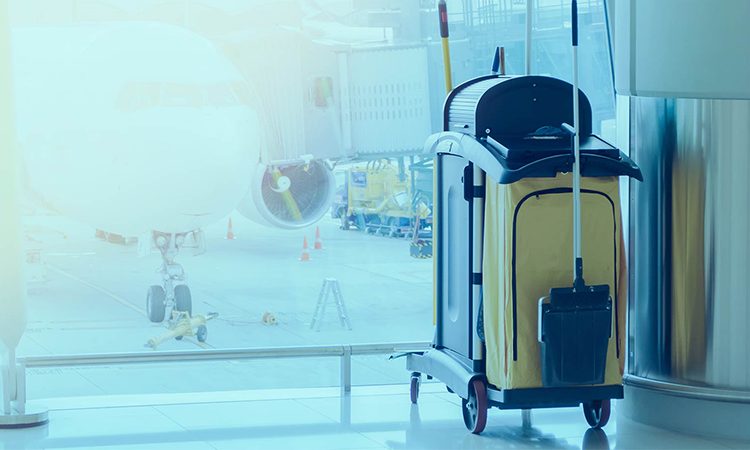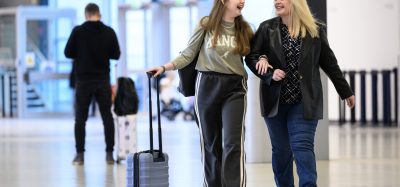A clean sweep: Intelligent sanitation management paves the way for safer air travel
- Like
- Digg
- Del
- Tumblr
- VKontakte
- Buffer
- Love This
- Odnoklassniki
- Meneame
- Blogger
- Amazon
- Yahoo Mail
- Gmail
- AOL
- Newsvine
- HackerNews
- Evernote
- MySpace
- Mail.ru
- Viadeo
- Line
- Comments
- Yummly
- SMS
- Viber
- Telegram
- Subscribe
- Skype
- Facebook Messenger
- Kakao
- LiveJournal
- Yammer
- Edgar
- Fintel
- Mix
- Instapaper
- Copy Link
Posted: 28 May 2020 | Siobhan Boyle - Veovo | No comments yet
Don’t waste time and effort – maximise your airport sanitation procedures with passenger behaviour data.


After months of travel restrictions, many people are looking forward to flying again – but only if they can do so safely. Therefore, regaining travellers’ trust in the cleanliness of airports and airlines will be necessary for resuming air travel.
According to a recent survey by Engine Insights, nearly 80 per cent ranked aircraft and airport disinfection procedures as their number one consideration for flying again. Similarly, in OAG’s industry survey, 65 per cent of respondents said that hygiene measures will be the most critical action required to get people back in the air. This ranks well above low fares, at just 10 per cent.
With research indicating that COVID-19 can survive on a range of surfaces for a few days, airports are significantly stepping up their cleaning and disinfecting across the terminal – from bathrooms to seating, touchscreens, handrails, handles, elevator panels and much more.
But with all the extra effort and expense in cleaning to prevent the virus from spreading, how can airports know if they are really doing an effective enough job to instil confidence in returning passengers?
Apply a needs-based cleaning strategy
Some areas will need more frequent disinfection than others. Rather than scheduling cleaning and sanitising every few hours, airports would benefit from shifting to a needs-based system. By combining movement data and flight schedules with occupancy and passenger density analytics, operators can monitor and respond to needs according to:
- Passenger movement: Airports can predict when travellers are likely to show up, where they dwell and for how long, and align cleaning to match behaviour and density
- High-risk flight arrivals: Deep-cleaning can be factored into planning following the arrival of a flight from a higher-risk region
- Check-in kiosks: With high-use touchscreens harbouring more germs than any other surface in the terminal, regular disinfection linked to the flight schedule and passenger volumes will minimise disruption
- Restroom usage: Sensors can count customer throughput to allow facility managers to track bathroom usage volume and re-stocking needs in real time
- Shift changeovers: Shift changes for processing, check-in, TSA, security and immigration staff can be factored into capacity planning, like opening additional lanes to allow for cleaning between workers.
Keep passengers informed
With much cleaning largely unseen by travellers, operators will need to be more upfront about how, where and when cleaning has taken place. This will reassure passengers of the airport’s commitment to providing a safe, hygienic environment to travel and serve as a reminder for everyone to do their bit – and wash their hands.
- Connect to digital messaging: Use dynamic displays to communicate last cleaning time information and to redirect flow while cleaning is underway
- Communicate via mobile app: Link movement data to the airport app to notify people when areas nearby were last cleaned
- Control restroom usage: Use sensor output analysis, combined with a traffic light system, to count and control the occupancy of restrooms
- Provide prompts to sanitise: Display messages pointing passengers to available bathrooms, based on real-time occupancy levels.
Be audit-ready
As we battle to gain control over COVID-19, increased cleaning can save thousands of lives. It’s no wonder an increasing number of regulators, including China CAAC and EASA, are recommending specific routine sanitation procedures.
With greater auditing of airport cleanliness, airports need to ensure they keep detailed records of all procedures linked to passenger numbers and flow around the terminal.
By automating the collection of cleaning data and combining it with location analysis, flight schedules, passenger flow and forecasting, airports can better prepare for audits, predict short-term adjustments and better plan for the future.
In the short term, sanitation decisions can be updated in real time to reflect flight arrival times, actual passenger counts and processing speeds. In the long term, usage and occupancy profiles can help make the case for adding toilets and creating additional restroom space and inform contact negotiations with cleaning suppliers.
Airport terminals have some of the world’s most rigorous standards when it comes to protecting people’s safety. Now, they have the opportunity to again lead the way through best practice cleaning and sanitising protocols – supported by real-time monitoring and intelligent automation – to minimise the spread of COVID-19 and give travellers the confidence to take to the skies again.
Related topics
COVID-19, New technologies, Passenger experience and seamless travel, Safety, Self-service, Terminal operations


















